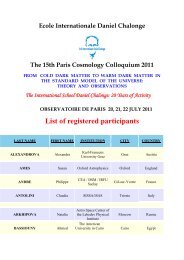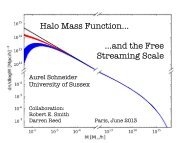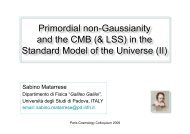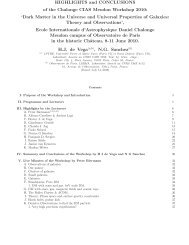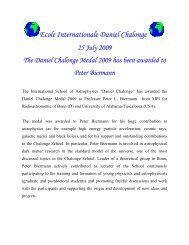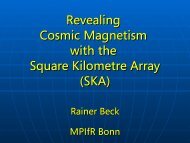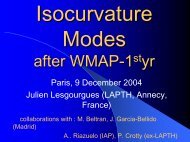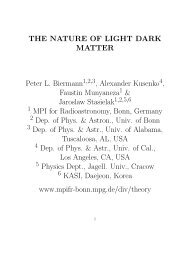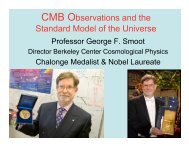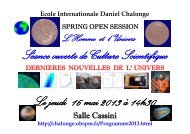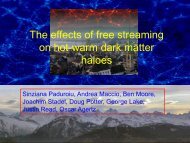You also want an ePaper? Increase the reach of your titles
YUMPU automatically turns print PDFs into web optimized ePapers that Google loves.
How did these ∼ 3 10 6 M⊙ black holes start?<br />
• Stars form in a potential well defined by DM properties<br />
(Munyaneza & PLB 2005, 2006): weakly degenerate<br />
supermassive Fermion galaxy cores<br />
• Massive stars form first, helped by the first molecular<br />
Hydrogen (PLB & Kusenko 2006)<br />
• Supermassive stars form by agglomeration of massive<br />
stars (Sanders 1970, Portegies Zwart et al. 2004), only<br />
with zero heavy elements (Yungelson et al. 2008)<br />
18<br />
• Supermassive stars + HII regions + explosion remnants<br />
+ residual: Thomson depth<br />
• Supermassive stars turn unstable near ∼ 106 M⊙ (Appenzeller<br />
& Fricke 1972): Hypernova remnant (HNR)<br />
• These HNRs both emit non-thermal radio emission,<br />
but also provide additional Thomson absorption depth



